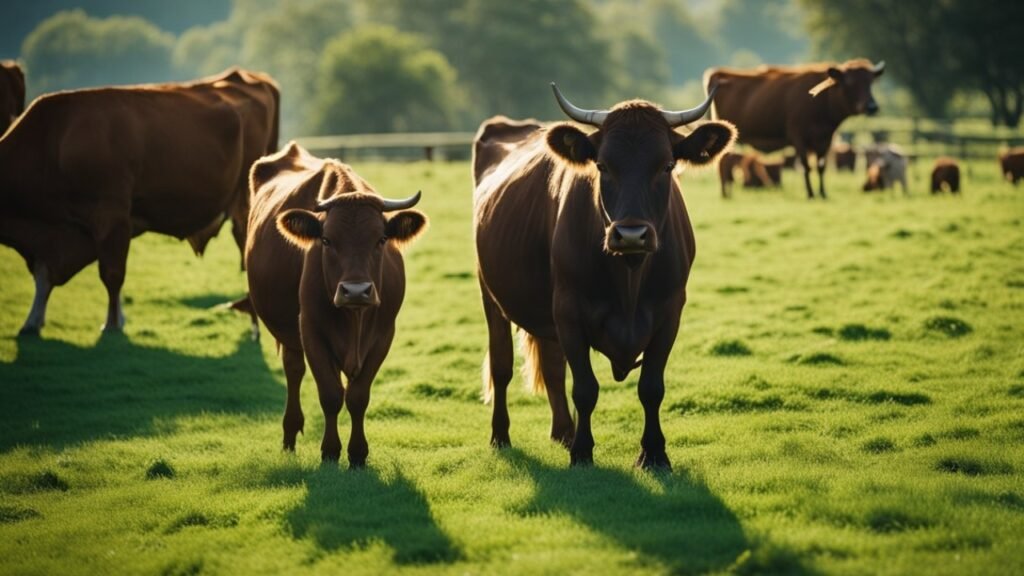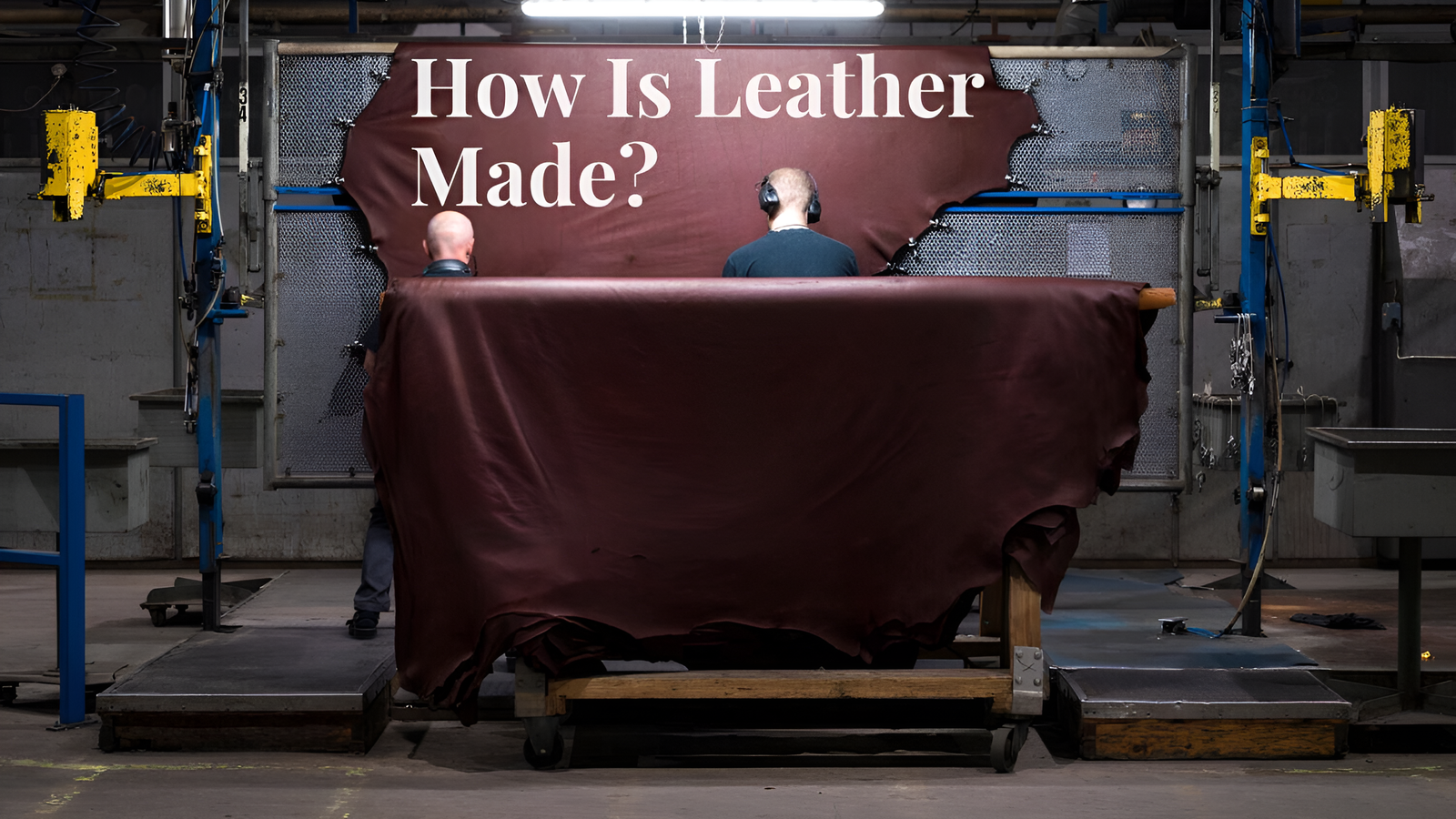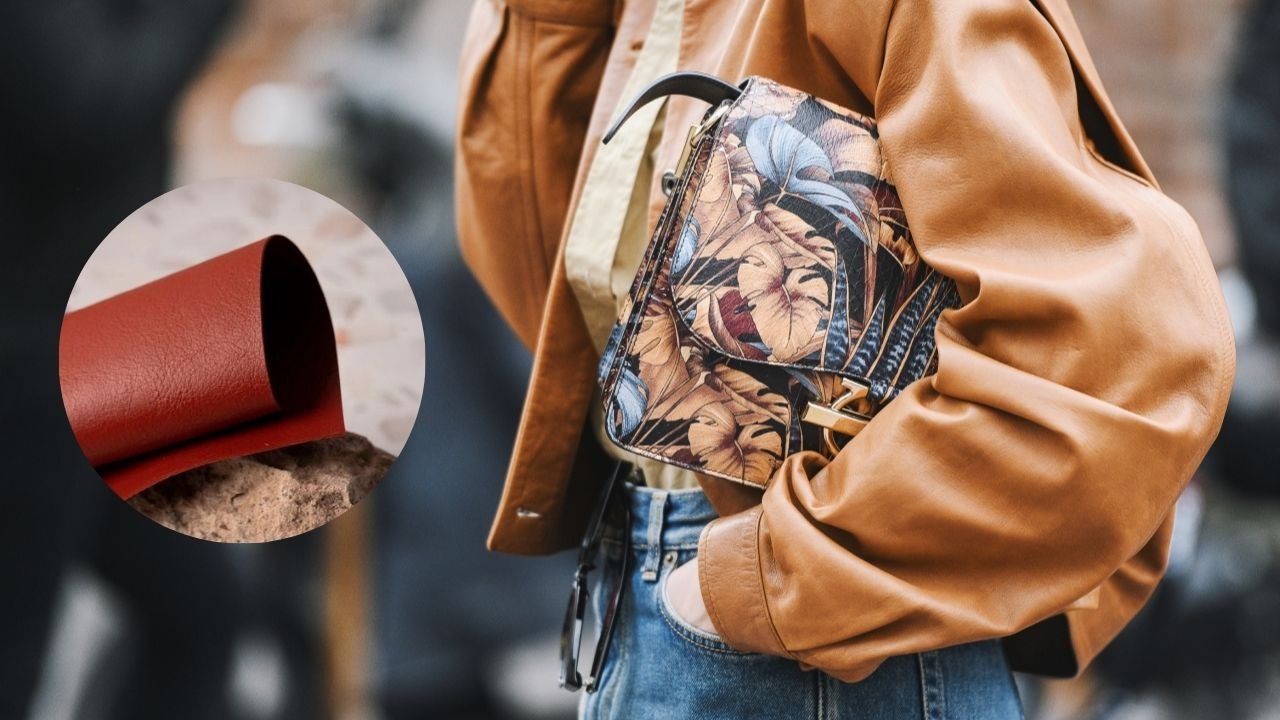Bovine leather is a type of leather that comes from the hides of cattle, including cows, buffaloes, bulls, and calves. Bovine leather is a popular material used for a wide range of products, including shoes, belts, upholstery, industrial gloves, and bags. Bovine leather is known for its toughness, durability, and resistance to wear and tear.
The history of leather use dates back to ancient times when humans used animal hides to make clothing, footwear, and shelter. Leather has been used for centuries due to its durability, versatility, and aesthetic appeal.
Today, leather is still a popular material used in a wide range of products, and bovine leather is one of the most commonly used types of leather in the world.
Key Takeaways:
- Bovine leather comes from the hides of cattle or basically larger-sized animals and is known for its toughness, durability, and resistance to wear and tear.
- Leather has been used for centuries due to its durability, versatility, and aesthetic appeal.
- Today, bovine leather is one of the most commonly used types of leather in the world.
In this comprehensive guide, we will delve into the intricacies of bovine leather, exploring its characteristics, production processes, types, and common uses. Additionally, we will discuss the historical context of leather use, compare bovine leather with other types of leather, and provide tips on how to care for and maintain bovine leather products.
Whether you’re a leather enthusiast, a consumer looking to make informed purchases, or a professional in the industry, this guide aims to provide valuable insights into the world of bovine leather.
Table of Contents
What is Bovine Leather
Bovine leather is a type of leather that comes from the hides of cattle, including cows, buffaloes, bulls, and calves.
So basically let’s first understand the meaning behind hides and skins, yes both are leathers but here is an easy way to understand the difference between these, hides are typically leathers made out of larger animals such as cows, buffaloes, & bulls, etc and skins are leathers made out of smaller-sized animals such as sheep and goats. I hope you are clear now.
Bovine leather is one of the most commonly used types of leather in the world, due to its large availability accounting for over 65% of the US leather market alone [1].
There are different grades of bovine leather depending on the quality and thickness of the hide. Full-grain leather is the highest quality and most expensive type of bovine leather.
It is made from the top layer of the hide, which retains the natural texture and markings of the animal.
Top-grain leather is the second highest quality and is made by sanding the top layer of the hide to remove any imperfections.
Split leather is made from the lower layers of the hide after splitting the thick leather into usually two halves and is less expensive than full-grain and top-grain leather [2].
Overall, bovine leather is a versatile and durable material that has been used for centuries to make a wide range of products. Its popularity is due to its strength, durability, and natural beauty.
[1] Leather Handy [2] Leather Ninja
History of Leather Use

Leather has been used by humans for thousands of years. Ancient civilizations such as the Egyptians, Greeks, and Romans used leather for clothing, footwear, and armor.
The durability and flexibility of leather made it a popular material for these applications.
During the Middle Ages, leather was used extensively for bookbinding, as paper was not widely available. Leather was also used for horse saddles and harnesses, as well as for military equipment such as shields and armor.
In the 19th century, the Industrial Revolution led to the mass production of leather goods. Leather became more affordable and accessible, and its use expanded to include furniture, luggage, and other household items.
Today, leather is used in a wide range of applications, including fashion, automotive upholstery, and sports equipment.
While synthetic materials have become increasingly popular, leather remains a popular choice due to its durability, flexibility, timeless aesthetic, and luxurious feel.
Overall, the history of leather use reflects humanity’s ongoing desire for practical and durable materials that can withstand the test of time.
Types of Bovine Leather
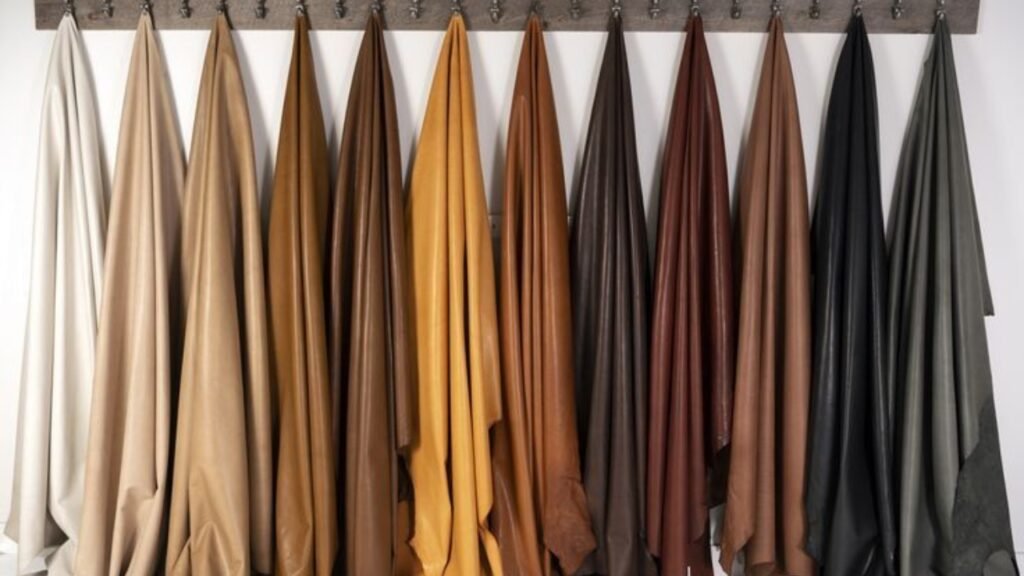
When it comes to bovine leather, there are several types available in the market. Each type has its own unique characteristics and uses. Here are some of the most common types of bovine leather or for a matter of fact any type of leather falls under these 4 categories:
Full-Grain Leather
Full-grain leather is the highest quality leather available. It is made from the top layer of the hide and retains the natural grain and texture of the animal’s hide/skin.
This type of leather is very durable and develops a rich patina over time. It is commonly used for high-end fashion products like footwear, leather goods, and upholstery.
Top-Grain Leather
Top-grain leather is the second-highest quality leather available. It is made by removing the top layer of the hide and sanding or buffing it down to remove any imperfections.
This process gives the leather a smooth, uniform surface. Top-grain leather is more affordable than full-grain leather.
Corrected-Grain Leather
Corrected-grain leather is made by sanding/buffing down the top layer of the hide and then imprinting or embossing a pattern onto it.
This process hides any imperfections in the leather and gives it a uniform appearance. Corrected-grain leather is often used for furniture, car interiors, and bags.
Split Leather
Split leather is made by splitting the bottom layer of the hide split from the top layer using a splitting machine. This layer is then sanded/snuffed down and finished with to give it a smooth surface.
Split leather is less durable than full-grain or top-grain leather and is commonly used for low-cost products like shoes and belts.
Overall, bovine leather is a versatile and durable material that is used in a wide range of products. Whether you are looking for high-end furniture or affordable shoes, there is a type of bovine leather that will suit your needs.
Tanning Processes
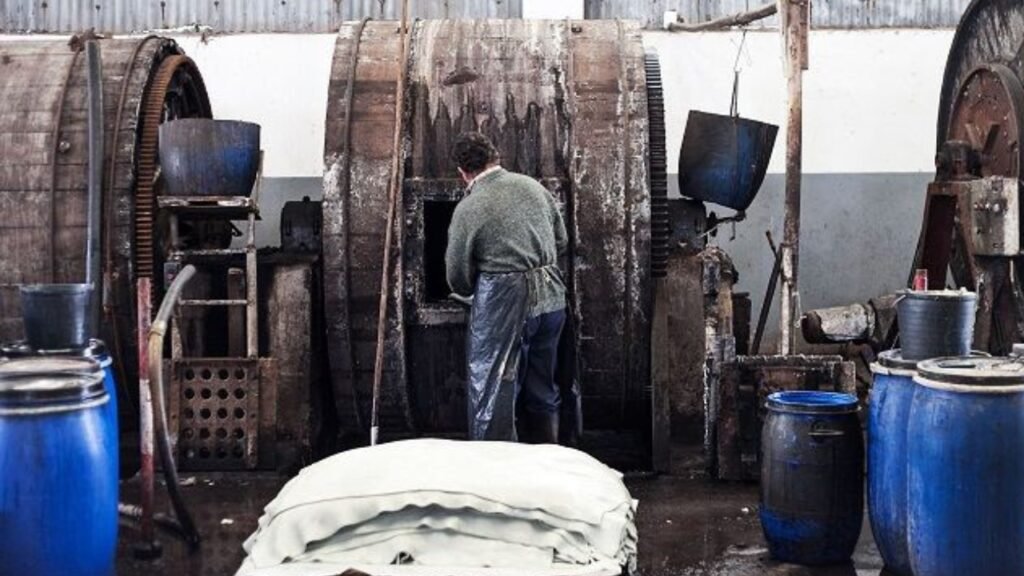
In simple words, bovine leather is made by tanning cow hides. Tanning is the process of treating raw animal hides/skin to produce leather.
The tanning process involves converting the raw, perishable animal skin into a stable non putricable material that can be used for various applications.
Tanning involves the use of chemicals to stabilize the hide thermally, mechanically, chemically, and microbiologically.
There are several tanning processes used to make bovine leather or perhaps any type of leather and it can be characterized under these categories.
Organic Tanning (Vegetable Tanning)
Vegetable tanning is an organic tanning process that uses natural tannins derived from plants such as oak, quebracho, chestnut, and mimosa. Vegetable tanning produces leather that is firm and durable.
This tanning process takes longer than other processes, but it results in leather that is more breathable and can age beautifully.
Vegetable-tanned leather is also environmentally friendly as it uses natural materials and produces less waste.
Inorganic Tanning (Chrome Tanning)
Chrome tanning is an inorganic tanning process that uses chromium salts to produce leather.
This process is faster and less expensive than vegetable tanning, and it produces a softer and more pliable leather. However, the process uses toxic chemicals that can be harmful to the environment if not properly disposed of.
Metal Free Tanning (Aldehyde Tanning)
Aldehyde tanning is a metal-free tanning process that uses aldehydes to produce leather. This process is similar to chrome tanning but uses less harmful chemicals. Aldehyde-tanned leather is soft and pliable.
However, the process is more expensive than chrome tanning and produces leather that is less durable than vegetable-tanned leather.
In conclusion, the tanning process used to make bovine leather affects the quality, durability, and environmental impact of the leather.
Vegetable tanning is the most environmentally friendly and produces the most durable leather, while chrome tanning is faster and less expensive but uses toxic chemicals. Aldehyde tanning is a metal-free alternative to chrome tanning but produces less durable leather.
Characteristics of Bovine Leather

Bovine leather, also known as leather made out of hides, is a popular type of leather used in various industries, including fashion, upholstery, industrial usage, sports and automotive. It is known for its durability, strength, and versatility. Here are some of the characteristics of bovine leather:
Breathability
Generally speaking leather at the end of the day is a breathable material that allows air to pass through it. This makes it a comfortable material to wear for extended periods, especially in hot and humid weather.
Its breathability also makes it suitable for use in footwear and automotive upholstery, as it prevents the buildup of moisture and odors.
Durability
One of the most significant advantages of bovine leather is its durability. It is a tough and resilient material that can withstand wear and tear, making it a popular choice for products that are expected to last a long time. With proper care, any type of leather product can last for many years, even decades.
Texture
Bovine leather has a unique texture that sets it apart from other types of leather. It has a natural grain pattern that varies from animal to animal, giving each piece of leather a distinct look.
The texture of bovine leather can be enhanced or altered through various processes, such as embossing or milling to give a pebble effect on the grain surface of the leather.
Flexibility
Despite its toughness, bovine leather is also a flexible material that can be molded and shaped into various forms. This makes it suitable for use in products that require a certain degree of flexibility, such as shoes, bags, and belts.
In summary, bovine leather is a durable, breathable, and versatile material that can be used in various industries.
Its unique texture and flexibility make it a popular choice for fashion and accessory products, while its durability and breathability make it suitable for use in furniture and automotive upholstery.
Leather Care and Maintenance
Not only Bovine leather but any type of leather is a durable and stylish material that can last for years with proper care and maintenance. Here are a few key guidelines to keep in mind:
Cleaning
To clean full-grain bovine leather, simply use a damp cloth with mild soap and wipe any excess moisture with dry microfiber towels after. It is important to avoid using harsh chemicals, such as bleach, alcohol solutions or ammonia, which can damage the leather. Additionally, avoid using too much water, as it can cause the leather to become stiff and brittle.
Conditioning
Conditioning the leather can help restore moisture levels, prevent cracking, and maintain its suppleness. Use a high-quality leather conditioner, to keep the leather soft and supple.
Apply the conditioner sparingly with a soft cloth and work it into the leather in circular motions. Let it sit for a few minutes, then wipe off any excess with a clean cloth.
Storage
When storing leather products, it is important to keep them in a cool, dry place away from direct sunlight. Avoid storing them in plastic bags or containers, as this can trap moisture and cause the leather to become moldy. Instead, use a breathable fabric bag or wrap the items in acid-free tissue paper.
Maintenance
Regular maintenance can help prolong the life of bovine leather items. It is recommended to clean and condition the leather at least once every six months, or more often if the items are exposed to harsh conditions, such as extreme temperatures or high humidity.
Additionally, avoid exposing the leather to water or other liquids, as this can cause staining and damage. By following these simple guidelines, any type of leather product can maintain its beauty and durability for years to come.
Comparing Bovine Leather with Other Types of Leather

Bovine leather vs. Other Animal Leathers
Bovine leather is one of the most commonly used animal leathers in the fashion industry. It is durable, strong, and has a natural texture that gives it a beautiful look.
When compared to other animal leathers, such as sheep, goat, or pig, all of which falls under ovine leather, bovine leather is thicker and more durable when compared to ovine leathers.
Sheepskin leather, for example, is softer and more pliable than bovine leather, but it is also less durable. Goat leather is lightweight and flexible, but it is not as strong as bovine leather.
Pig leather is cheaper than bovine leather, but it is also less durable and has a lower quality texture in general.
Bovine leather vs. Synthetic leather
Synthetic leather is a man-made material, first of all, it is not even leather, it is just designed to look like real leather that’s it nothing else. It is often used as a cheaper alternative to real leather.
While synthetic leather or perhaps I would like to call it synthetic material is cheaper than leather, it is also less durable and has a lower-quality texture.
Synthetic material is also not as breathable or durable as real leather, which can be uncomfortable for some people.
Bovine leather is a natural material that is more durable, breathable, and has a higher quality texture than synthetic leather.
Bovine leather vs. Vegan leather
Vegan leather is a material that is designed to look and feel like real leather, but it is made from synthetic materials or plant-based materials even this is not real leather.
It is often used by people who want to avoid using animal products. It is also less durable and has a lower-quality texture.
Vegan leather is also not as breathable as real leather, which can be uncomfortable for some people.
Bovine leather is a natural material that is more durable, breathable, and has a higher quality texture than vegan leather.
Common Uses of Bovine Leather

Bovine leather is a versatile material that can be used for a wide range of products. It is durable, strong, and has a natural texture that looks great in many different settings. Here are some of the most common uses of bovine leather:
Fashion Industry
Bovine leather is a popular material in the fashion industry. It is often used to make shoes, belts, bags, upholstery, and other accessories.
The natural texture of the leather gives these items a unique look that is difficult to replicate with other materials. Bovine leather can be dyed in a variety of colors, making it a versatile material for fashion designers.
Furniture Manufacturing
Bovine leather is also commonly used in the furniture industry. It is often used to make sofas, chairs, and other upholstered furniture.
The durability, comfort, and strength of the leather make it a good choice for furniture that will be used frequently. Bovine leather can be treated with protective coatings to make it more resistant to stains, fire, and spills.
Automotive Upholstery
Bovine leather is a popular material for automotive upholstery. It is used to make seats, steering wheel covers, and other interior components.
The durability, comfort, and strength of the leather make it a good choice for automotive applications, where it will be exposed to a lot of wear, tear, fire, and fog resistance.
Industrial Usage
Bovine leather is also used in a variety of industrial applications. It is often used to make Industrial footwear, gloves, aprons, and other protective gear.
The strength and durability of the leather make it a good choice for these applications, where workers need protection from sharp objects and other hazards.
Overall, bovine leather is a versatile material that can be used in many different applications. Its strength, comfort, durability, and natural texture make it a popular choice for a wide range of products.
Quality Assessment
When it comes to assessing the quality of Bovine leather, there are several factors to consider. These include the type of bovine leather, the grain, and the tanning process used.
Grading Systems
One of the most common grading systems used for bovine leather is the “A” to “C” grading system and other lower grades. This system is based on the number of blemishes, scars, and other imperfections on the leather.
Grade “A” leather has the fewest to no blemishes and is considered the highest quality, while grade “C” leather has the most imperfections and is considered acceptable quality, well at the end it depends on the end functional use of the leather.
Another grading system used for bovine leather is the “full-grain” vs. “top-grain” system. Full-grain leather is considered the highest quality because it is made from the top layer of the hide and retains the natural texture and markings of the animal.
Top-grain leather, on the other hand, is sanded/buffed to remove imperfections and is considered slightly lower quality.
It’s important to note that grading systems can vary depending on the country, end functional use, and the manufacturer. Some manufacturers may use their own grading systems or may not use any grading system at all.
Overall, when assessing the quality of bovine leather, it’s important to consider the type of leather, the grain, and the tanning process used. By understanding these factors, consumers can make informed decisions when purchasing leather products.
Market Trends and Future Outlook
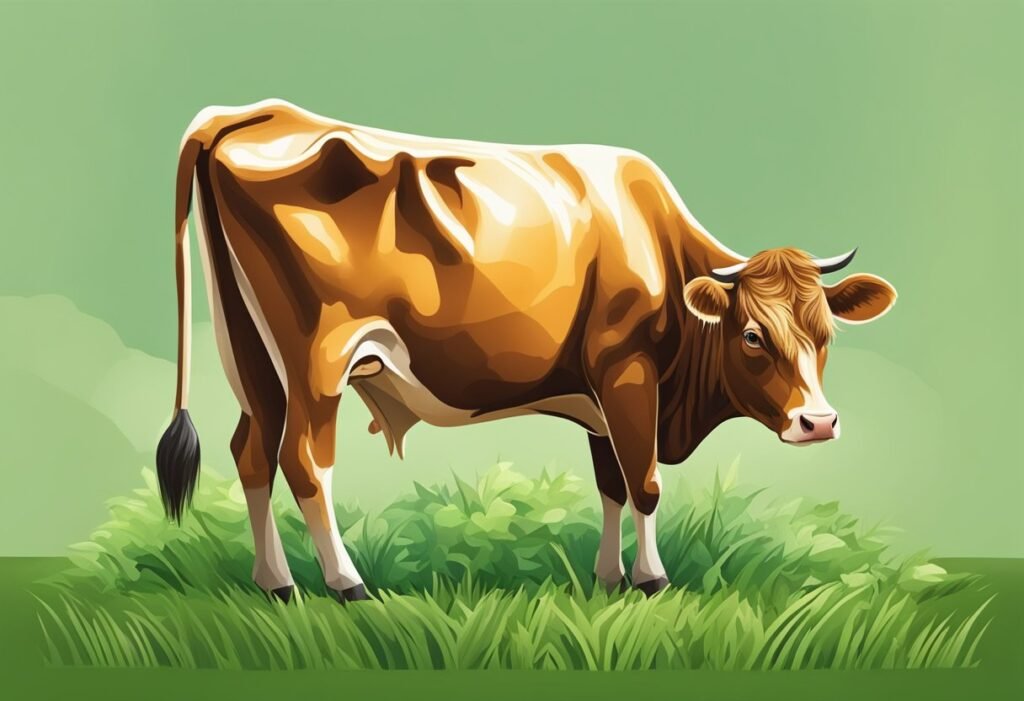
Bovine leather is a widely used material in the fashion industry due to its vast availability and other factors such as durability, versatility, and aesthetic appeal.
According to a recent report by Future Market Insights, the global leather goods market size is expected to reach USD 764.81 billion by 2033, growing at a CAGR of 5.6% over the forecast period.
The market is primarily driven by rising consumer disposable income, improved living standards, changing fashion trends, and growing domestic and international tourism.
The demand for bovine leather goods is expected to increase due to the growth of the automotive industry, which uses leather for car interiors, and the footwear industry, which uses leather for shoes and boots.
Additionally, the demand for leather goods is expected to rise due to the growing popularity of luxury goods in emerging economies such as China and India.
However, the bovine leather industry is facing challenges due to the increasing availability of synthetic and vegan leather, which is cheaper and easier to produce than bovine leather.
As a result, some companies are shifting towards using synthetic and vegan leather, or perhaps how I would like to rephrase them is synthetic and vegan materials in their products.
To address these challenges, the leather industry as a whole is focusing on innovation and sustainability you can read the recent conference which was held few days back in Brussels here https://leathernews.org/green-deal-leather-project-a-milestone-for-the-european-leather-industry/. Companies are exploring new ways to reduce the environmental impact of leather production, such as using biodegradable chemicals and reducing water usage.
Frequently Asked Questions
How does bovine leather compare to genuine leather in terms of authenticity?
Bovine leather is a type of genuine leather. It is made from the hides of cattle, buffalo, and bison, and is known for its strength and durability. Genuine leather is a term used to describe any leather made from animal hides, as opposed to synthetic materials. Therefore, bovine leather is a type of genuine leather and is considered to be an authentic material.
What are the primary uses of bovine leather in manufacturing?
Bovine leather is a versatile material that is commonly used in the manufacturing of a wide range of fashion, automotive and industrial products, including shoes, handbags, belts, upholstery, Industrial gloves and automotive interiors. Its strength and durability make it an ideal choice for products that require a high level of performance and longevity.
How does the durability of bovine leather compare to other types of leather?
Bovine leather is known for its strength and durability, making it one of the most durable types of leather available. It is thicker and heavier than other types of leather, such as sheepskin or goatskin, which makes it more resistant to wear and tear. However, the durability of bovine leather can vary depending on the quality of the leather and the tanning process used.
What distinguishes bovine leather from calf leather?
Bovine leather and calf leather are both made from animal hides, but they come from different parts of the animal. Bovine leather comes from the hides of adult cattle, while calf leather comes from the hides of young calves. Calf leather is generally softer and more supple than bovine leather and it is more expensive cost wise, but it is also less durable.
Can bovine leather be considered a high-quality material?
Bovine leather can be considered a high-quality material, depending on the quality (selection grade) of the leather and the tanning process used. Full-grain bovine leather, which is made from the top layer of the hide, is considered to be the highest quality and is prized for its natural grain and texture.
Conclusion
Bovine leather, sourced from the hides of cattle, is a staple in various industries due to its durability, versatility, and aesthetic appeal. Its rich history and extensive use across fashion, furniture, automotive, and industrial applications underscore its importance.
From ancient civilizations to modern-day innovations, leather has consistently been valued for its unique characteristics and adaptability. The production process of bovine leather involves meticulous tanning methods that enhance its quality and longevity.
Types of bovine leather, such as full-grain, top-grain, corrected-grain, and split leather, each offer distinct benefits suited to different applications. Understanding these differences helps consumers make informed choices tailored to their needs.
Despite facing competition from synthetic and vegan alternatives, bovine leather maintains its appeal due to its natural qualities, breathability, and timeless charm. Proper care and maintenance further extend its lifespan, making it a sustainable choice for various products.
As the market evolves, the leather industry continues to innovate, focusing on sustainability and reducing environmental impacts. Bovine leather’s future looks promising, with ongoing efforts to balance traditional craftsmanship with modern ecological standards.
In summary, bovine leather remains a premium material that combines tradition, quality, and sustainability. Its continued relevance in multiple sectors highlights its enduring value and adaptability, ensuring it remains a preferred choice for consumers and manufacturers alike.
I hope this blog was informative. It took us a lot of time to research, fact-check, and write this article. Please add a comment down below—it would really motivate us. If you have any further queries, feel free to leave a comment or write to us via the contact page, and we will make sure to get back to you as soon as possible.





